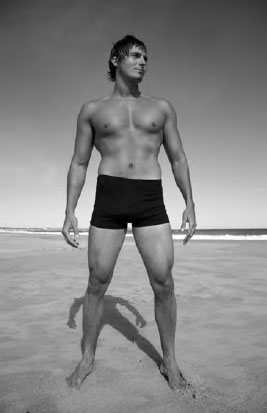The Psychology of Everyday Life:Love, Marriage, and the Baby CarriageLove |
What makes a man attractive to the opposite sex? |
Generally, young, physically fit, and muscular men with no signs of disease or malformation are considered attractive. Large pectoral muscle-mass and broad shoulders suggest upper body strength. Across evolution, these traits probably aided in sexual selection. In other words, traits that we associate with masculine beauty provide an evolutionary advantage. Masculine beauty advertises to women the man’s ability to provide physical protection as well as to pursue or compete for food and other resources.
Masculine beauty also signals the man’s ability to compete with other men for women. An appreciation of male beauty would help women choose mates that enhance their own reproductive success, both by ensuring better support in child care and by contributing genes that maximize their children’s own reproductive fitness. While we know that culture strongly affects our notions of masculine beauty—for example with regard to hairstyle, fashion, and bodily adornment—we can still conclude that there is a biological basis to basic notions of male beauty and that such patterns have evolutionary significance.

Physical beauty sends signals to women that a man has an evolutionary and competitive advantage over less healthy and fit males (iStock).
